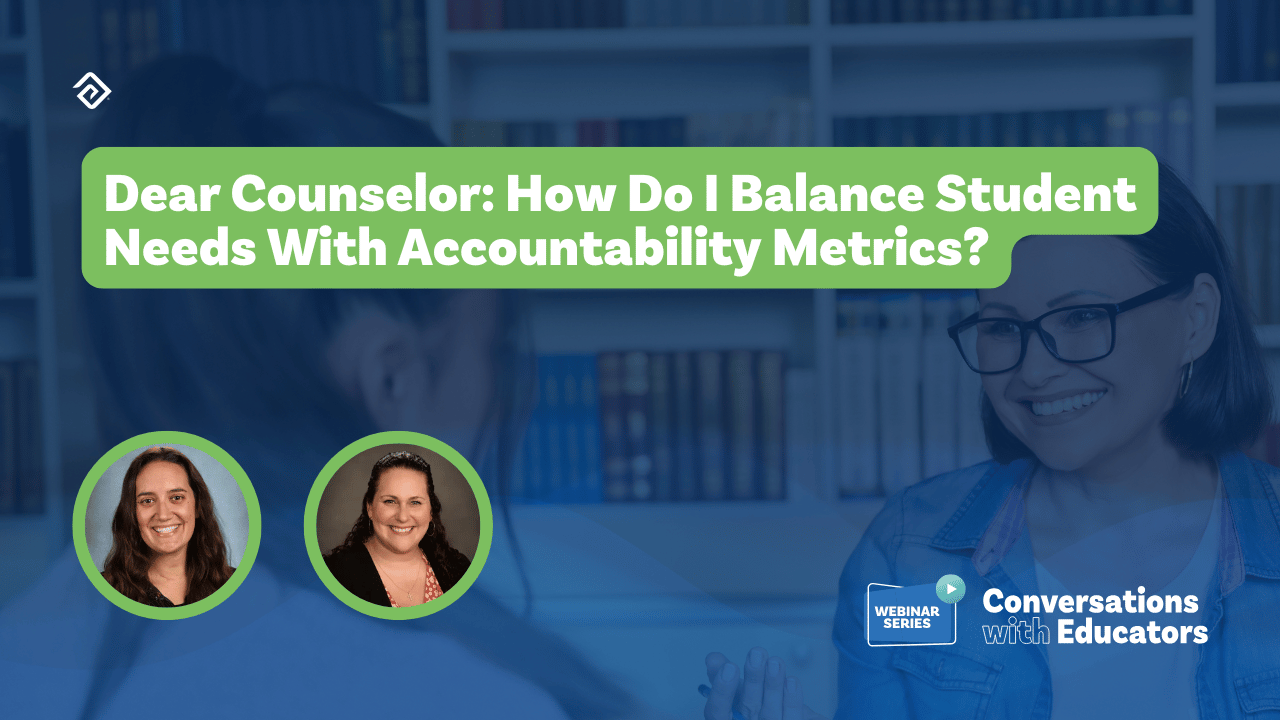Every Student, Every Credit: Your CTE Fall Readiness Strategy
As fall begins, CTE directors face a flood of responsibilities, including ensuring students are enrolled in the right courses, protecting funding, and preparing for new graduation requirements.
In our recent webinar, Every Student, Every Credit: Your CTE Fall Readiness Strategy, Education Advanced’s Robbie Grimes and Lisa Tunnell sat down with Ben Barkey, Director of the Warsaw Area Career Center, to share how districts can simplify their CTE processes and support every student.

How Do Early Schedule Audits Protect Funding and Prevent Costly Mistakes?
Barkey: Even small misalignments can cost big money. At Warsaw, we realized splitting a required freshman course across two semesters cut our funding in half.
By shifting all students into the same semester, we recaptured about $30,000.
Anytime you can generate more dollars for kids without adding extra work, that’s a win… I’d rather spend time helping teachers and students than fixing preventable data mistakes. Early audits save both time and dollars.
These fixes weren’t complicated, but they made a measurable impact.
How Can CTE Directors Foster Collaboration Across Other Teams?
Barkey: Collaboration is a constant conversation. Our Perkins needs assessment helped us make collaboration an ongoing goal rather than a one-time meeting. Personnel changes every year, so it can’t be about a single conversation. It has to be systems that bring everyone together for the sake of student clarity and opportunity.
Tunnell: As a former CTE director, I’ve seen how crucial that ongoing communication is. When counselors understand how courses align with graduation pathways, they can better guide students and avoid costly missteps.
How Do You Make Systems Sustainable?
Barkey: We’ve tried to script out as much as we can and then create some autonomy inside of that, but not reinventing the wheel every year. With consistent processes, counselors and teachers can focus on students instead of scrambling to fix errors.
We want to make sure kids aren’t just caught by dumb luck… we’ve created systems that make sure students don’t fall through the cracks.
Any tool that lets me double-check funding or run GPA reports early is invaluable. We don’t want to find out in April that a student’s credits aren’t aligning; we want to catch it in October.
These systems aren’t just efficient; they make sure every student has the same chance to succeed, no matter who’s in the role or what year it is.

What Happens When Students Pivot Late in the Game?
Barkey: Seniors often change their pathway plans at the last minute. Without systems, those pivots can derail graduation. That’s why we built a multi-tiered system of support (MTSS). Instead of leaving success to chance, we identify students early, connect them with the right resources, and surround them with support. It’s about making sure no student falls through the cracks because of timing.
Parents also play a vital role in helping students see opportunities they might overlook. Even in large districts with high counselor-to-student ratios, involving families early makes a big difference.
How Can Career Centers Support Every Student?
Barkey: Warsaw’s MTSS model was inspired by elementary ‘response to intervention’ systems, which are tailored to help high school students who are at risk of falling behind or changing direction. Systems should help identify these things, and surround students with support.
Our approach brings teachers, counselors, and even community members together during PLC time to review student progress, connect them with resources, and close achievement gaps in real time. It’s about using the systems we already have to make sure every student succeeds.
Final Thoughts
CTE readiness isn’t just about compliance or funding. It’s about making sure every student earns every credit they need. By auditing schedules early, fostering collaboration, building sustainable systems, and creating structured supports, districts can give students clarity and consistency as they graduate ready for what’s next.
Barkey reminded viewers that the goal is long-term sustainability, not quick fixes. “When processes are clear and repeatable, students aren’t left to succeed by chance,” he said.
True readiness comes from aligning people, data, and purpose, so every counselor, teacher, and administrator has the information they need to guide students confidently. When systems work, no opportunity is lost, and every student leaves high school with a clear path forward.
If you missed the live webinar, you can watch the full session here to hear the conversation and access helpful tips for planning your next steps.
If your school is interested in new ways to improve the learning experience for children, you may also be interested in automating tasks and streamlining processes so that your teachers have more time to teach. Education Advanced offers a suite of tools that may be able to help:
- Evaluation: A staff evaluation solution for documenting every step of the staff evaluation process, including walk-throughs, self-evaluations, supporting evidence, reporting, and performance analytics.
- Pathways: A graduation tracking tool that enables administrators and counselors to create, track, and analyze graduation pathways, ensuring secondary students stay on track to graduate.
- TestHound: Our test accommodation software helps schools coordinate thousands of students across all state and local K-12 assessments while considering various accommodations, such as for reading disabilities, physical disabilities, and translations.

More Great Content
We know you'll love





